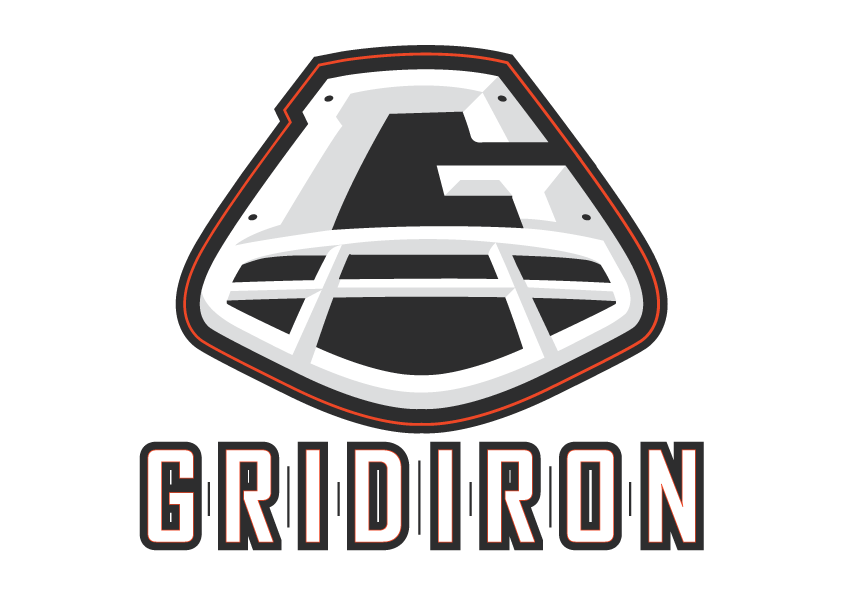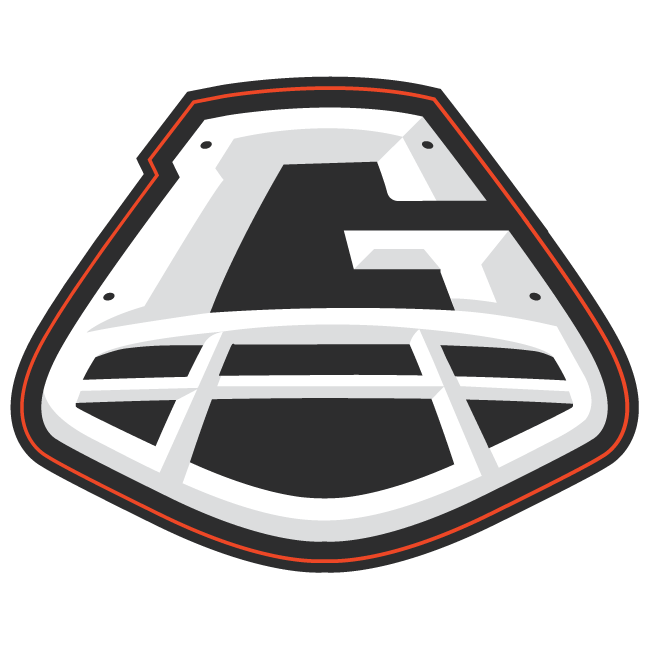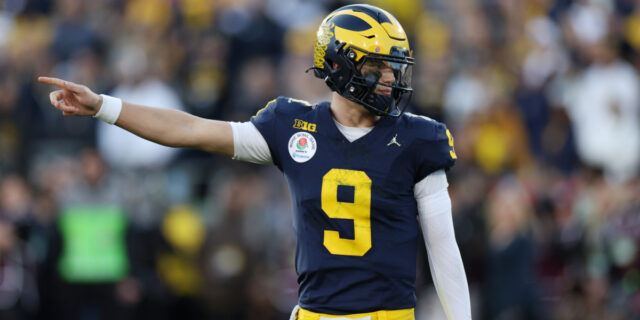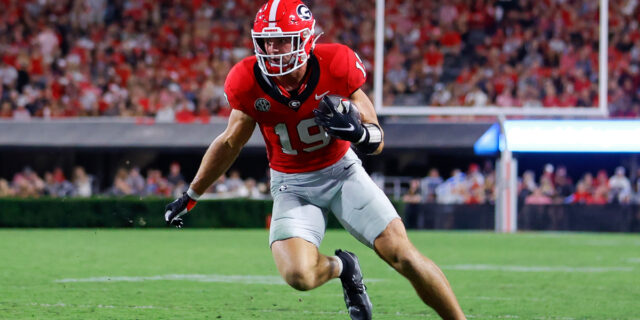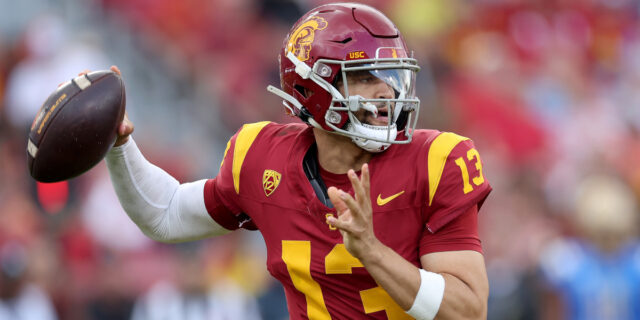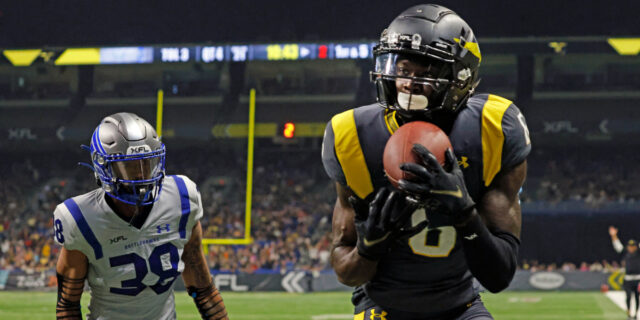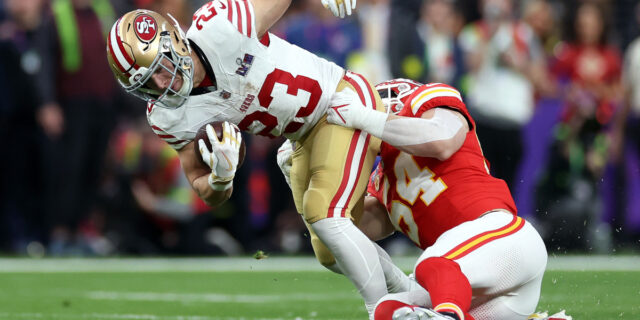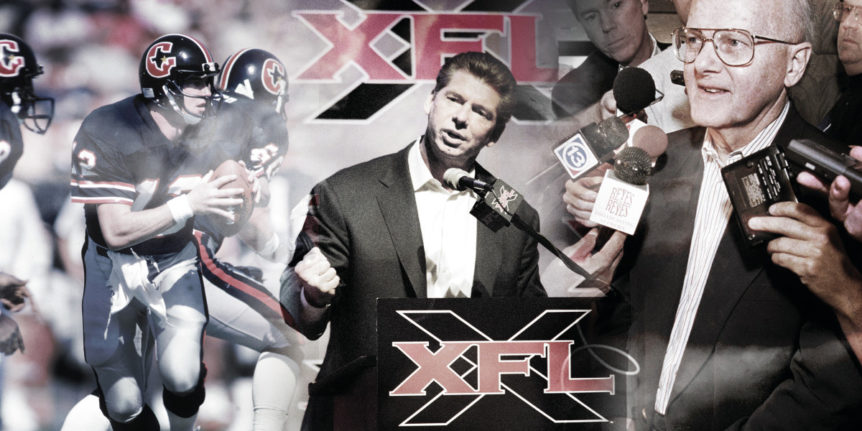
CARLSON’S OTHER PROFESSIONAL FOOTBALL LEAGUES – PT.3
‘Iron Mike’ Carlson concludes his look back at the best and worst rivals to the NFL over the last century, bringing us a top three that includes the spark for this dip into the archive…
3. UNITED STATES FOOTBALL LEAGUE (1984-86)
The USFL’s gameplan was solid: play in the spring, when there was no football, keep budgets low with a salary cap, and occupy only big-market cities. TV money from ABC allowed them to stick to this plan, devised by New Orleans entrepreneur Dave Dixon, although some owners broke the cap to sign big-name free agents, which the others accepted. I worked for ABC Sports at the time; the league’s first season drew TV ratings lower than advertisers had been promised, but still better than the usual programming (Wide World of Sports, Pro Bowlers Tour) on Sunday afternoons.
But the league was divided between owners, notably John Bassett, with WFL experience, who wanted to stick to the plan, and others like Donald Trump and sports TV promoter Eddie Einhorn who wanted to play in the fall to force an AFL-style merger with the NFL. Despite ABC offering a huge deal to continue in the spring, Trump won the battle over an ailing Bassett, the league moved to the fall, folded, and won an anti-monopoly lawsuit against the NFL, with damages of $1, tripled by law to $3!
The USFL’s quality of play was good: their best team, the Philadelphia Stars, was probably NFL quality, except perhaps for QB Chuck Fusina, who lacked a big arm but was the epitome of a field general. You probably know that the USFL QBs included Steve Young, Jim Kelly, Bobby Hebert and Doug Flutie, and RB Herschel Walker, but the league also developed stars such as Reggie White, Irv Eatman, Kent Hull, Sean Landeta, Gary Zimmerman, Anthony Carter, Kelvin Bryant, Dan Ross, Sam Mills, Nate Newton, Mel Gray and many more. It had a huge influence on the NFL, including coaches Jim Mora and Marv Levy, and executives Bill Polian and Bill Peterson. I don’t think the league was up to the NFL standard overall, but their statistics ought to get some consideration.
2. ALL-AMERICA FOOTBALL CONFERENCE (1946-49)
America was ready for another football league after the war – returning players added to those already in the NFL meant there too many for the amount of jobs, and the market was great. The core of the new league were Paul Brown’s Cleveland Browns, taking over Cleveland from the Rams – who we first met in AFL 2 and had won the 1945 NFL title, before owner Dan Reeves moved them to L.A. in 1946, which suited his star QB Bob Waterfield, and his film-star wife Jane Russell. Reeves also knew Brown was a local hero from his time coaching at Massillon High and Ohio State.
Brown built the first great pro football dynasty, winning all four AAFC titles, and then reaching six title games in his first six NFL seasons. He was helped by his time coaching Great Lakes Naval Station; he knew the returning wartime players well. The Browns dominated the AAFC, boasting stars like Otto Graham, Marion Motley, Bill Willis, Lou ‘The Toe’ Groza and Dante Lavelli and won the NFL title in the first season after the leagues merged.
Brown also integrated the league with Motley and Willis, although – in the first season – they didn’t play in a road game in Miami. The NFL also absorbed the 49ers, led by Frankie Albert and Joe ‘The Jet’ Perry, who always finished second to the Browns in the Western Division, and the Baltimore Colts, who folded after one season and were replaced by a new Colts team in 1953. The AAFC Buffalo Bills were passed by, even though they’d been profitable; their name would resurface in the AFC. Meanwhile, the AAFC’s New York Yankees, probably the second-best team, with stars like Spec Sanders, Frank Sinkwich, Bruiser Kinard, Ace Parker and a young Tom Landry, folded. Their best players went to the NFL’s New York Bulldogs, who promptly renamed themselves the Yanks.
The AAFC was progressive, and probably better in comparison with the NFL than many people think: just because players were already in the NFL in 1946 didn’t make them stars.
1. AMERICAN FOOTBALL LEAGUE (1960-69)
You all know about this AFL! It may not have been the pass-happy football that has become its legend, but the league grew into on-field equality with the NFL by the time of the first Super Bowl (though the 1963 Chargers might have been that good earlier).
Many of the ‘Foolish Club’, the owners of the original eight teams, had tried to get NFL franchises and, in fact, the NFL’s expansion to Minnesota and Dallas in 1961 was aimed at keeping the AFL out of those cities (it drove the Dallas Texans to Kansas City, where they became the Chiefs). But the AFL brought pro football to New England, Houston, Denver, Oakland and eventually San Diego, while ABC’s television deal allowed them to survive the difficult early years.
You know the names of some of the NFL retreads who became passing stars: Len Dawson, George Blanda, Jack Kemp, Tobin Rote. But, with innovative coaches like Hank Stram, Sid Gillman and Al Davis, the league’s homegrown stars made their impact: great defensive players like Bobby Bell, linemen like Jim Otto or Ron Mix and, of course, offensive legends Lance Alworth and Joe Namath. The wide-open AFL might better refer to their quickness to embrace the ethos of the Sixties: ‘Broadway Joe’ and Fred ‘The Hammer’ Williamson were the XFL without the artifice.
The AFL may be somewhat undervalued in football history since the merger, but the modern NFL owes it a lot, and it helped push the game into a new decade, while the original league fought to keep it in the Fifties.
Catch up on Parts 1 and 2 of this feature
This article originally appeared in Issue XLV of Gridiron magazine – for individual editions or subscriptions, click HERE
